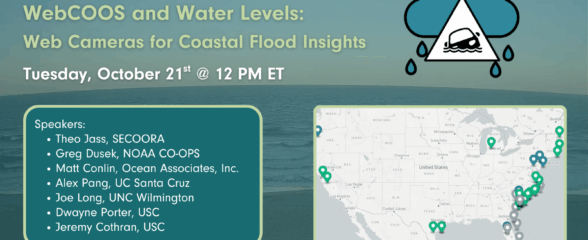Located in Beaufort, South Carolina, the Port Royal Sound is a thriving haven for many different animals, plants, and people. The deep, salty water and the surrounding estuaries and marshes support many species of fish, sea turtles, dolphins, sharks, and more. The Sound is also dynamic culturally and economically, and is very much at the center of the Beaufort community.
The Port Royal Sound Foundation (PRSF) is a local nonprofit committed to connecting the surrounding community with the Sound through education and research. The Foundation provides hands-on learning to make science fun for residents and visitors. According to Jody Hayward, Executive Director of the Foundation, her team is dedicated to building a culture of conservation to help protect the Sound for the enjoyment of future generations.
“The Foundation works to connect the dots for people on why it’s important to take care of the Port Royal Sound,” Jody says. “The Sound defines our area and our way of life. People move here and visit here because of the beauty, enjoyment, and lifestyle that the Sound provides.”
Partnering with scientists, organizations, and locals is the Foundation’s key to successfully building a strong support system for the Sound. The PRSF Maritime Center sets the stage for scientists to connect with community members and tourists. Their educational center uses a unique recipe of culture, history, recreation, art, and ecology when building their exhibits. This opens the door for visitors of all ages to learn about the Sound and the animals that call it home.

Connecting with the Sounds of the Sound
While the natural beauty of Port Royal Sound is easy to see, connecting the community with what’s under the water can be tricky. In the hunt for a creative solution, Jody discovered a local scientist, Dr. Eric Montie from the University of South Carolina Beaufort who studies underwater “soundscapes” by listening to sounds recorded underwater to learn about animal behavior.
Dr. Montie’s research is focused on listening to the animals that live in the estuaries surrounding Port Royal Sound – specifically the resident dolphins – through passive acoustic monitoring. Passive acoustic monitoring is like placing a sound recording device in a restaurant. You aren’t only going to hear the waitress; you’ll also record the diners, kitchen staff, and the sounds of clinking dishes. By monitoring for dolphin sounds in the Port Royal Sound, Dr. Montie’s team also captures sounds of snapping shrimp, fish, and alligators.
“The dolphins act as canaries in a coal mine – if the system is not doing well, their population may become lower,” Dr. Montie explains. “The more dolphins that we have in an estuary, the healthier the estuary is, meaning there’s more prey that those animals can feed upon.”

To capture these sounds, Dr. Montie’s team places passive acoustic receivers underwater to record sounds. After the acoustic receivers have been in the water for several months, his team pulls them out and downloads the recordings. Experts identify each recorded animal sound to create the “soundscape” that allows listeners to experience the underwater world without having to get their heads wet. These soundscapes are featured in the PRSF Maritime Center, providing an immersive experience for listeners of all ages.
“Of course, all species that call the Port Royal Sound home, either full-time or as part of their migratory paths, are important. But our dolphins are particularly charismatic and are usually the animals that generate the most excitement from residents and visitors,” Jody remarks. “The Maritime Center features Dr. Montie’s research on dolphins and the underwater sounds they make to capture people’s attention and imagination, allowing visitors to become more knowledgeable and appreciative of this unique environment we are all so lucky to enjoy.”

By “listening” to animals for over ten years, Dr. Montie and his team have identified areas of high animal activity in the estuaries of South Carolina. With support from SECOORA and Port Royal Sound Foundation, this project has been used to connect long-term sound data with traditional fish surveys to further solidify the locations of high animal activity. Dr. Montie’s work is an integral part of the national Marine Biodiversity Observation Network (MBON), which strives to understand the interconnectedness of marine species from the estuaries to the open ocean.
A Continuous Learning Opportunity
As people flock to the Beaufort area, the Port Royal Sound Foundation continues to spread awareness about what makes the region special.
“Our goal is to keep supporting impactful research in the Port Royal Sound, both to ensure we are doing our jobs to conserve it, but also to make other scientists aware of this unique estuary to conduct innovative research,” says Hayward. “We can help make that research accessible to people moving to this area, to ideally engage them in the strong conservation culture we have here.”

Last year, the Port Royal Sound Foundation saw over 34K visitors. They continue to receive letters from those inspired almost daily. If you would like to learn more about Dr. Montie’s dolphin research, watch the video linked here. The Port Royal Sound Foundation is located at 310 Okatie Hwy in Okatie, SC. Visit the Port Royal Sound Foundation online and plan your trip now!
You can learn more about Soundscape Ecology and listen to recorded sounds on the SECOORA website: https://sound.secoora.org/
Contact Emily Noakes (emily@secoora.org) with any questions regarding this story.
Related news

SECOORA Webinar | WebCOOS and Water Levels: Web Cameras for Coastal Flood Insights
On October 21st at 12 PM ET, SECOORA is hosting a webinar with investigators from the Webcam Coastal Observation System (WebCOOS) project team and the WebCOOS Project Manager. Web cameras are a low-cost technology that can be used to document flooding impacts to coastal communities. Register here.

SECOORA Funding Opportunity Announcement: Letters of Intent Solicitation
SECOORA will submit a coordinated regional proposal in response to the anticipated FY 2026 Implementation of the U.S. Integrated Ocean Observing System (IOOS) funding opportunity. Letters of Intent to be considered for inclusion in SECOORA’s full proposal are due September 9, 2025.

SECOORA Hosts the First Surface Elevation Table (SET) Community of Practice Virtual Workshop
The SECOORA SET Workshop was virtual on July 17, 2025. More than 50 Community of Practice members and stakeholders joined this collaborative workshop to discuss SET monitoring, coastal resilience, and data-driven decision making in the Southeast.
